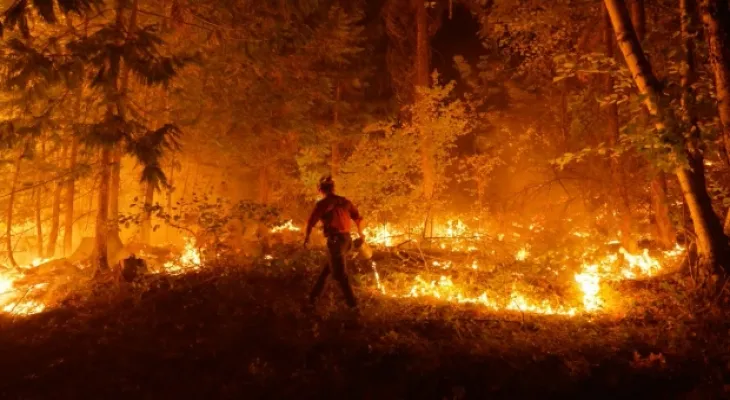Search here
Newspaper
Search here

Arab Canada News
News

Published: December 17, 2023
A new study revealed that Canadian homeowners and communities can reduce the risk of wildfires on buildings if they start taking steps such as cutting buffer zones and using fire-resistant building materials.
The study published today, Sunday, by the Intact Centre on Climate Adaptation at the University of Waterloo, indicates that the 2023 wildfire season saw wildfire losses that broke previous records set in 1995, with fires burning an area covering about a quarter of Manitoba's lands.
The report, titled "Before the Flames," states that Canadians living in forest and grassland areas need to follow "well-tested measures" that can reduce the risk of their homes burning "by up to 75 percent."
The document includes two charts, with images illustrating the practical steps homeowners and communities should take, including calls for homeowners to store wood away from the house, remove shrubs and other flammable materials near the foundation, and remove trees within 10 meters of the building.
More complex steps include installing fire-resistant roofs made of asphalt, fiber cement, or metal, which could limit the likelihood of embers igniting the roof.
The study also calls for steps communities can take, such as removing tree branches near power lines, incorporating 30-meter buffer zones in community design, and ensuring sufficient water supplies for firefighting.
Research estimates from the center indicate that in wildfire-prone areas, communities can save $34 for every dollar invested in fire-resistant building options, and $14 for every dollar spent on rehabilitating buildings and facilities to become more fire-resistant.
The study found that 60% of Canadian communities are exposed to wildfire risk due to their proximity to forests and grasslands.
It states that the wildfire risk in these communities "is escalating due to urban development expansion, lack of nationally accepted building standards for wildfire protection, accumulation of flammable vegetation adjacent to buildings, and increased fuel around communities resulting from 100 years of fire suppression."
Meanwhile, it says climate change plays a bigger role as it leads to lengthening the annual number of days when wildfires can occur.
The study points out that "according to historical records, current wildfire seasons start about one week earlier and end one week later than they did 70 years ago."
"Scientists expect that by the end of the century, the fire season will be longer, increasing on average by 30 days per year, but it will vary across the country, with Western Canada facing a 50 percent increase in hot and dry days, and Eastern Canada experiencing a 200 to 300 percent increase."
Blair Feltmate, the center’s director, said the report aims to help Canadians achieve the goals outlined in the federal government’s national adaptation strategy, which calls for communities in vulnerable areas to "develop community wildfire prevention and mitigation plans by 2030, with up to 15 percent implemented by 2028.”
Comments